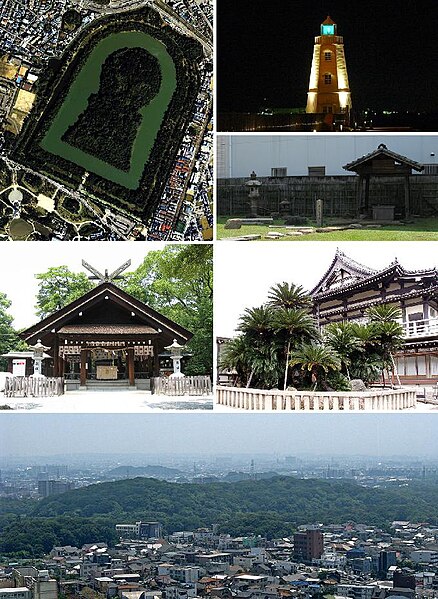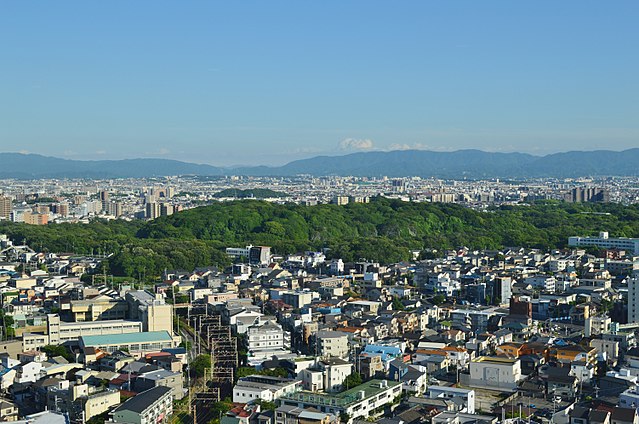Sumiyoshi-ku (住吉区) is one of 24 wards of Osaka, Japan. It is located on the southern part of the Uemachi Plateau, in the southernmost part of Osaka City, and is separated from Sakai City's Sakai-ku and Kita-ku by the Yamato River. There are six rail lines, and three main thoroughfares - Abiko-Suji, Abeno-Suji and Nagai Koen-Dori, which runs east–west and connects the area with the port to the west. The northern part of Sumiyoshi-ku is a residential area which is a continuation of the southern part of Abeno-ku. The Tezukayama 1-Chome neighbourhood in Abeno-ku, and Tezukayama-naka and Tezukayama-nishi neighbourhoods in Sumiyoshi-ku are upper-class residential areas. South of this, around the Sumiyoshi Grand Shrine, are the Sumiyoshi and Kamisumiyoshi neighbourhoods, home to many long established local families. Surrounding these are the middle-class residential neighbourhoods of Shimizugaoka, Suminoe, Oriono, Dairyo, Minamisumiyoshi, Yamanouchi, and Nagai, which lies at the eastern end of the ward. Sumiyoshi-ku is home to about 157,000 residents, and has a population density of 16,800 people per square kilometer.

Sumiyoshi Taisha
Sakai is a city located in Osaka Prefecture, Japan. It has been one of the largest and most important seaports of Japan since the medieval era. Sakai is known for its kofun, keyhole-shaped burial mounds dating from the fifth century. The kofun in Sakai include the largest grave in the world by area, Daisen Kofun. Once known for swords, Sakai is now famous for the quality of its cutlery. As of 1 January 2022, the city had an estimated population of 819,965, making it the fourteenth most populous city in Japan.
From top left: Daisen Kofun, Old Sakai Lighthouse, Ruins of Rikyu's house, Ōtori taisha, Myōkoku-ji, Skyline with Daisen kofun in the center
Daisen Kofun
Mozu Tombs
Ōtori taisha





